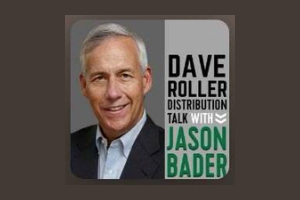Listen to Jason Bader of the Distribution Talk Podcast and Dave Roller discuss E-commerce Pricing.
Find the entire Podcast HERE
Find additional Topics and transcripts HERE
Transcript
Dave Roller: It’s not a mystery. The Amazon’s and other E-Comm giants are using factors that come through in the data that you’re referring to. For example, they focus on the item’s sales, how often the customer buys it, how much they spend, how much they spend on the category. They’re converting transaction data into a guide to figure out how sensitive an item is to a customer. In my view, one of the most important assets any distributor owns is their transaction data because that can make them a lot more money.
Jason Bader: Absolutely. Oh, I couldn’t agree with you more. And again, you know, it’s that being able to go in and make sense of it. I mean, I think that’s really the magic there- is again, the transaction data is there. It’s just how do you extract it? I mean, BI is one way. But I think that’s really where folks get maybe a little overwhelmed and a little confused about it and I think that’s, that’s really a challenge there. But if I could, I want to step back and you started talking a little bit about E-Comm and I think, you know, that’s something I’d like to bring up. You wrote an article, you know, recently about talking about, “is your online pricing credible?”, now this was something that was just, you know, fascinating. Could you walk us through that a little bit and talk about maybe what your thoughts were around that?
Dave Roller: Yeah, absolutely. When we talk to distribution leaders and ask them about online pricing, there’s a generalized discomfort with “Am I pricing in the right manner?”, “Am I too low and cannibalizing my profits?” or “Am I losing price impression to the competition?”. A year ago, we did a study analyzing 25,000 items that distributors sold in four different industries- electrical, plumbing, HVAC, and general industrial distribution. We compared where each item was priced by the online giants and how it compared with our clients pricing. We came to three basic conclusions. The first conclusion was that on the most competitive items, the commodities distributors margin is lower than the online giants, even their discounted quantity price. On the other end of the scale, some distributors are too high on the most incidental items they sell and they’re losing price impression. That typically happens when they set their online pricing based on appealing to a walk in or a pure cash customer.
Jason Bader: Okay. Okay.
Dave Roller: Third one, in the middle, there’s an opportunity for distributors. They still typically are underneath the big guys online and could move up their margins a little bit online.
Jason Bader: Interesting. I mean, I think that this has been a huge mystery. I know that many clients- first of all, they hate the online pricing out there because it feels like, they’re handcuffed or they get those price objections when people walk in the door and say, “Well, I can buy it so much cheaper”, and I think that’s just a visceral reaction. It’s like, “Well, fine, go buy it and you can wait a few days to get it” and there’s this visceral reaction. But it is something that they wish they knew how to combat better or knew how to play that game a little bit better. It sounds to me like there is some opportunity here.
Dave Roller: Well I think so, and when you start trying to understand how the online giants are pricing, it’s not magical. If you look at the factors that influence their price, they’re just what everyone would think, it’s the sales of the item, the relative number of customers buying the item, number of hits or events, the unit price range. So that’s, what’s determining their margin rate. Something that the online guys do better than the average distributor is they have a little bit more bandwidth when they price. Most distributors operate within, a narrow margin bandwidth. The big customers might be sold at 20%, the smallest guys in the high 20% range. So that kind of puts you right in the middle, which is a dangerous place to be sometimes. It goes back to what we’ve been talking about, how do you utilize the information you have in your transaction history to figure out where you need to be careful, and where you can safely make a little bit more?
Jason Bader: Yeah, and I think also in that article, you mentioned that many distributors are seeing an increase in their E-Comm traffic, you know, due to lockdown and shutdowns and whatnot. And so this is, it seems to me like perfect time to really get this pricing shored up, because you’re going to be missing opportunities if you do not get your arms around this.
Dave Roller: Since the shutdown, there’s been a 200+% increase in the number of online transactions in our industry. Something I would also mention,is that your online pricing has to be part of the overall pricing strategy of your company. And sometimes in early conversations with our customers, they look at that almost as an adjunct.
Jason Bader: Yeah, definitely. I know one company that I’ve worked with in the past that it is a separate branch location for their E-Comm. It’s technically another branch and the pricing is wildly different than it is in any of their other brick and mortar places. And so yeah, that’s, that’s really interesting that they do really separate that out. But you would say that, no, it really should be part of that pricing matrix, it should really just be a function somewhere in there.
Dave Roller: I would suggest that it’s a delivery vehicle for your overall pricing matrix driven by a strategy.

